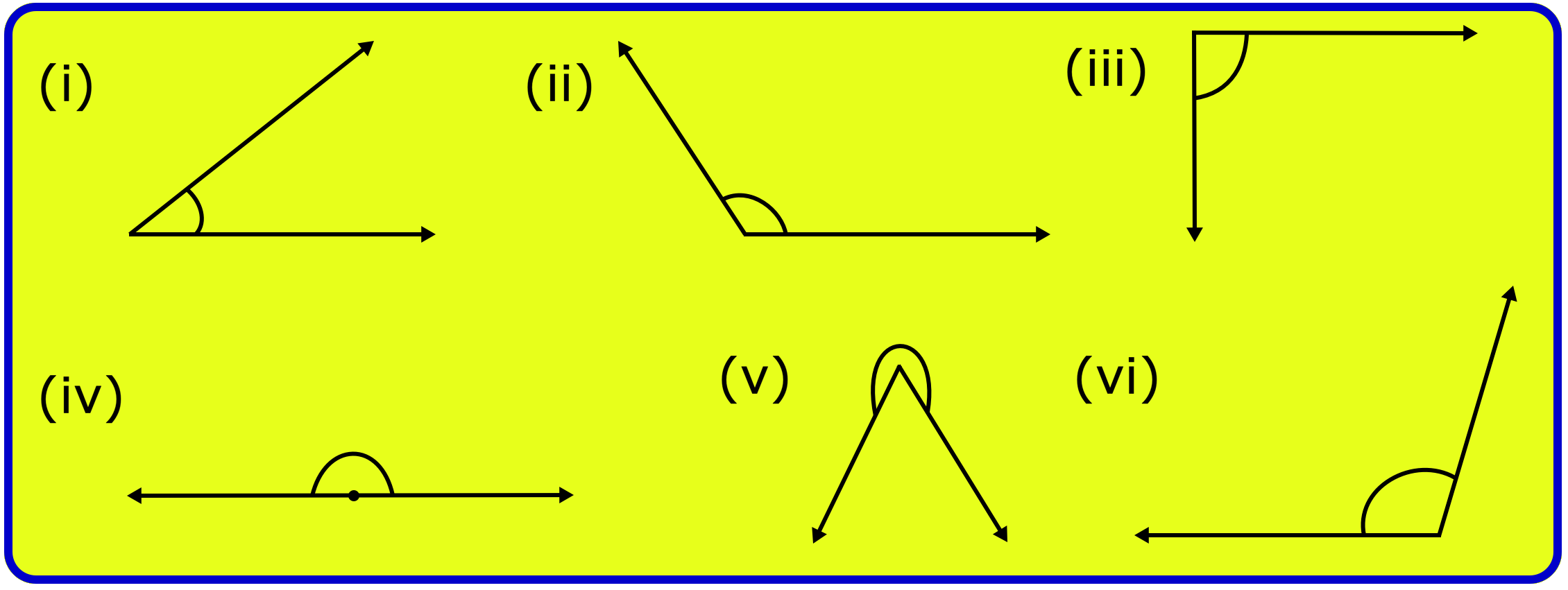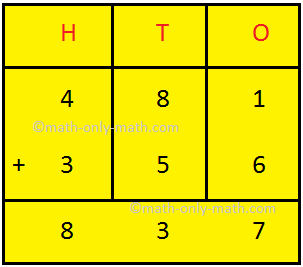Subscribe to our YouTube channel for the latest videos, updates, and tips.
Home | About Us | Contact Us | Privacy | Math Blog
Properties of Angles of a Triangle
We will discuss about some of the properties of angles of a triangle.
1. The three angles of a triangle are together equal to two right angles.
ABC is a triangle.
Then ∠ZXY + ∠XYZ + ∠YZX = 180°
Using this property, let us solve some of the examples.
Solved examples:
(i) In ∆XYZ, ∠X = 55° and ∠Y = 75°. Find ∠Z.
Solution:
∠X + ∠Y + ∠Z = 180°
or, 55° + 75° + ∠Z = 180°
or, 130° + ∠Z = 180°
or, 130° - 130° + ∠Z = 180° - 130°
Therefore, ∠Z = 50°
(ii) In the ∆XYZ, ∠Y = 5∠Z and ∠X= 3∠Z. Find the angles of the triangle.
Solution:
∠X + ∠Y + ∠Z = 180°
or, 3∠Z + 5∠Z + ∠Z = 180°
or, 9∠Z = 180°
or, 9∠Z9 = \frac{180°}{9}
Therefore, ∠Z = 20°
We know, ∠X= 3∠Z
Now, plug-in the value of ∠Z
∠X= 3 × 20°
Therefore, ∠X= 60°
Again we know, ∠Y= 5∠Z
Now, plug-in the value of ∠Z
∠Y= 5 × 20°
Therefore, ∠Y= 100°
Hence, the angles of the triangle are ∠X = 60°, ∠Y = 100° and ∠Z = 20°.
2. If one side of a triangle is produced, the exterior angle so formed is equal to the sum of the two interior opposite angles.
The side QR of the ∆PQR is produced to S.
Then ∠PRS = ∠RPQ + ∠PQR
Corollary 1: An exterior angle of a triangle is greater than either of the interior opposite angles.
In ∆PQR, QR is produced to S.
Therefore, ∠PRS > ∠RPQ and ∠PRS ∠PQR
Corollary 2: A triangle can have only one right angle.
Corollary 3: A triangle can have only one obtuse angle.
Corollary 4: A triangle must have at least two acute angles.
Corollary 5: In a right-angled triangle, the acute angles are complementary.
Now, using this property, let us solve some of the following examples.
Solved examples:
(i) Find ∠Q from the given figure.
Solution:
∠P + ∠Q = ∠PRS
Given, ∠P = 50° and ∠PRS = 120°
or, 50° + ∠Q = 120°
or, 50° - 50° + ∠Q = 120° - 50°
or, ∠Q = 120° - 50°
Therefore, ∠Q = 70°
(ii) From the given figure find all the angles of ∆ABC, given that ∠B = ∠C.
Solution:
Given, ∠B = ∠C
We know, ∠DAC = 150°
∠DAC + ∠CAB = 180°, as they form a linear pair
or, 150° + ∠CAB = 180°
or, 150° - 150° + ∠CAB = 180° - 150°
or, ∠CAB = 30°
Let ∠B = ∠C = x°
Therefore, x° + x° = 150°, as the exterior angle of a triangle is equal to the sum of the interior opposite angles.
or, 2x° = 150°
or, \frac{2x°}{2} = \frac{150°}{2}
or, x° = 75°
Therefore, ∠B = ∠C = 75°.
From Properties of Angles of a Triangle to HOME PAGE
Didn't find what you were looking for? Or want to know more information about Math Only Math. Use this Google Search to find what you need.
Recent Articles
-
Formation of Numbers | Smallest and Greatest Number| Number Formation
Jul 14, 25 01:53 AM
In formation of numbers we will learn the numbers having different numbers of digits. We know that: (i) Greatest number of one digit = 9, -
5th Grade Geometry Practice Test | Angle | Triangle | Circle |Free Ans
Jul 14, 25 01:53 AM
In 5th grade geometry practice test you will get different types of practice questions on lines, types of angle, triangles, properties of triangles, classification of triangles, construction of triang… -
5th Grade Circle Worksheet | Free Worksheet with Answer |Practice Math
Jul 11, 25 02:14 PM
In 5th Grade Circle Worksheet you will get different types of questions on parts of a circle, relation between radius and diameter, interior of a circle, exterior of a circle and construction of circl… -
Construction of a Circle | Working Rules | Step-by-step Explanation |
Jul 09, 25 01:29 AM
Construction of a Circle when the length of its Radius is given. Working Rules | Step I: Open the compass such that its pointer be put on initial point (i.e. O) of ruler / scale and the pencil-end be… -
Combination of Addition and Subtraction | Mixed Addition & Subtraction
Jul 08, 25 02:32 PM
We will discuss here about the combination of addition and subtraction. The rules which can be used to solve the sums involving addition (+) and subtraction (-) together are: I: First add





New! Comments
Have your say about what you just read! Leave me a comment in the box below. Ask a Question or Answer a Question.